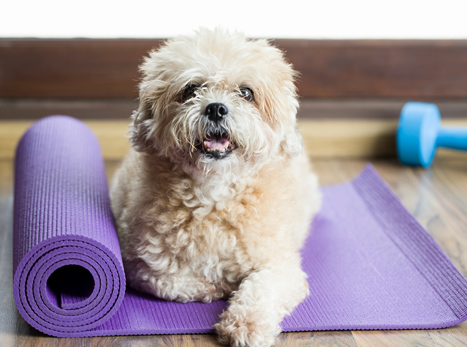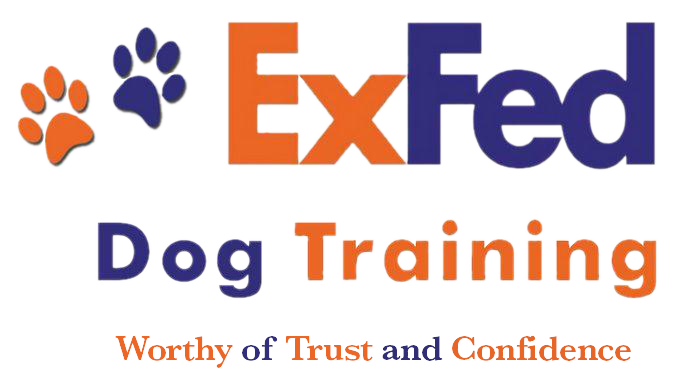My General Philosophy:
Dogs want to get through each day with as little stress as possible. They thrive on schedules and in knowing what is expected of them on a daily basis. That doesn’t mean you can’t challenge a dog to learn new things or change their routine. You should always work on your positive relationship with your dog and challenge them to become better! A well-trained dog is a joy to be around and is easier to live with on a daily basis. Although training is time consuming at first, it’s an awesome and important investment in your positive relationship with your dog that will continue to pay dividends for many years to come.
As owners, we owe it to our dogs to provide them with consistency and clarity with our expectations. I never give my dogs a command that I am not in a position to enforce. If I use a command word, I enforce it 100% of the time or my high compliance rate will suffer. Dogs are master manipulators and if you give them an inch, they will take a mile every time. I love, love, love my dogs and they are spoiled, but they are trained and they listen the vast majority of the time.
Training Tips

Cues/Commands:
After you have shaped the behavior with treats and your dog performs the cues, reinforce the cue with “good and the cue name”. Once your dog has demonstrated that they understand the Cue by performing the shaped behavior, ask once and then help them into the position of the cue. Most people forget to praise their dog or give feedback when they are doing the desired behavior. Feedback lets the dog know that you are happy and that is a reward. Feedback gives the dog clarity.
Sit:
Seated position (Stay is implied)
Off:
4 paws on the floor. Used as a cue to stop jumping. Take your hands away and do not give affection (reward) until your dog has “4 on the floor”. When proofing this cue, step on the leash so that the dog will not be able to jump up (without them knowing) and if they jump up, they will come to the end of their leash and auto-correct. When you pair it with the “Off Cue” and say “Good Off”, they will learn not to jump.
Let’s Go:
Loose leash walk. Dog needs to be even with you or behind you and not pulling on the leash.
Place:
Crate without walls. The “Place” can be a raised cot (Kuranda Bed or 4Legs4Pets Cot – See Products), a mat, a rug, towel or other item. The item to be used for “Place” has to be big just enough for the dog to fit and be different than the surrounding surface. Place is portable and can be virtually hundreds of things. I do not put my dogs in a command on place (e.g. down), because then they would be in multiple commands (in a down on place) and I just want them to keep 4 paws on place.
Heel:
Formal walk with head held high and staying on your left pant out-seam. Picture a 10” business envelope taped to your left leg at your dog’s eye level. His eyes need to be within that envelope and not too far forward or behind. Heel is a position, and your dog needs to remain in that position, regardless of what you are doing. If you move fast, the dog needs to move fast, and if you move slow, the dog needs to move slow and match your pace. If you turn right, the dog needs to turn right and if turning left, the dog needs to turn left. Also part of heel is the auto-sit where if you stop, the dog stops and sits. Even at first if you have to tell the dog to sit when you stop, reinforce the “heel” with “good heel”. Give the dog a target with your left hand touching your left leg at the same time as you say “heel” and step off with your left leg. If your dog surges ahead, make left turns into the dog (crisp about face) to change direction. This will show the dog down and force them to yield to your presence. If they lag behind, speed up, encourage them with your voice and tap your leg.
Come:
Come to me in a straight line and sit directly in front looking up at me for more direction.
Down:
Lay down in a sphinx position
Leave It:
If you want your dog not to touch something, tell it your intentions. If he goes for the item anyway, use the “out” cue.
Out:
Stop what you’re doing and look to me for more direction. Initially, “out” should be guttural and come from deep down in your belly. “Out” mimics the sound a mother dog used to correct a puppy. If you’re in a “heel” and the dog keeps sniffing the ground, say “out” and with the leash, pull the dog’s head upward. If your dog is mouthing or nipping, use the “out” cue.

Kennel / Crate:
You are telling the dog to enter their kennel or crate. Never force a dog to go into the crate and if they are hesitant, use treats and possibly the leash with a little pressure and release technique. This should be a happy place and never used as punishment. Feed the dog in the crate (leave down for 15 min. and then pick up food). Have awesome treats for the dog in the crate, such as stuffed Kong’s or an uncooked beef marrow bone. Don’t only put the dog in the crate when you are gone and don’t always shut the door. Teach thresholds and permission based training by opening the door slowly. If your dog rushes the door, quickly close the door and ask them to sit. Just because you open the door does not mean they have permission to rush out. They should only come out when you say “let’s go”.
Free:
This is a release word that allows your dog to just be a dog and be in no formal cue. You should still have the dog on leash and the dog should not be pulling on the leash. If your dog is in a cue and you release it with “free”, initially, they may need some help to understand they can break the cue. Guide them gently forward on the leash and say free in a high, animated, fun voice
General tip
Using the same word (cue) for the same desired behavior all the time and by all members of the household will ensure that your dog understands what you are asking them to do and provides them with a consistent language. For example, don’t say “come here Rover”, just “come”.

Need more help?
Please complete the behavioral evaluation to provide us with more information about your issue(s) and training goals to assist us in developing a plan to help you and your dog during the scheduled personal evaluation/training session here at ExFed Dog Training in Brewster, MA.
Testimonials
Raving fans!

Rick is not only an excellent trainer, but he is also extremely professional, easy to work with, and an all-around great guy. He has helped me train my Catahoula Leopard dog, Savannah, so well that I constantly receive comments on how well my 1-year old dog is trained. He truly has a natural command of dogs that can only be learned through years of experience and dedication to the craft. I cannot recommend Rick enough!
Steve Bunce
Tilton, NH
